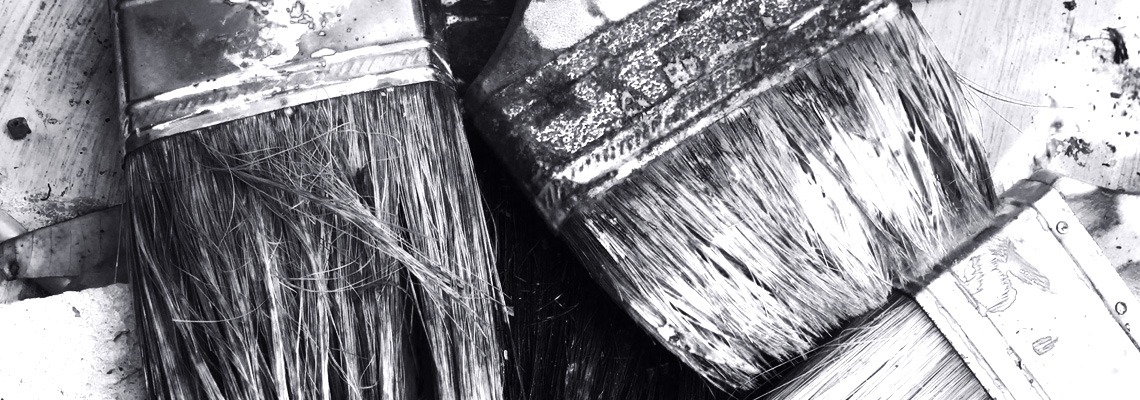To make this process easier for you, we offer an overview of the different paint types available on the market and discuss their advantages and disadvantages. So, if you are in the process of refitting or redesigning your space and don’t know how to choose the best type of paint, this is our guide for you.
What is the difference between different types of paint?
There is a wide variety of commercial paint types and finishes on the market. Understanding the difference between them is critical to ensure the success of the interior design and refit process. So what different types of paint can you choose from? And what do you need to know about them?
Commercially available paints today differ in terms of their composition, finish and their overall effect. Based on their makeup, we can distinguish between oil-based and water-based paints, each coming in a wide variety of finishes. Thus, you can choose between matte, gloss, eggshell or satin finishes, depending on your design goals, environment and materials. But what is the exact difference between these paint types and finishes?
Paint Composition
Depending on the type of binding agent used in the actual paint to help it attach to the surface, we can talk about water-based and oil-based paints. These two types of paint differ not only in terms of colour and finish but also in terms of cost, durability and health and safety criteria. So let’s review them in a bit more detail.
Water-based paints
Most commercially sold paints today are water-based. Also known as latex paints, water-based paints consist of a colour pigment and a water-based binder that acts as a carrier. Their popularity is mostly due to the fact that they are easy to apply, offer great colour retention and are more environmentally friendly. Moreover, they dry faster than oil-based paints and are generally easier to work with.
All in all, the advantages and disadvantages of water-based paints are:
Advantages of water-based paints:
+ don’t require pre-treatment
+ easy to clean
+ dry faster
+ suitable for a wide variety of surfaces
+ offer good colour retention
+ emit less odour while painting
+ more environmentally friendly
+ offer great levelling properties for a smooth finish
Disadvantages of water-based paints:
– less vivid or rich than oil-based paints
– prone to chipping and peeling
– less suitable for use in humid environments
– can be more expensive than oil-based paints
Oil-based paints
In contrast to water-based paints, oil-based paints contain a natural or synthetic oil as a base. Suitable for most surfaces, oil-based paints offer a high-quality finished paired with excellent durability. They are perfect for creating rich, deep colours and have great coverage.
In short, the advantages and disadvantages of oil-based paints are the following:
Advantages of oil-based paints
+ high gloss finish
+ perfect for humid, moist environments
+ provide a hard, durable finish
+ offer great coverage
+ can hide small imperfections
Disadvantages of oil-based paints
– less environmentally friendly due to high VOC levels
– harder to work with and clean up
– a solvent or a thinner is required during application
– difficult to touch up later
– long drying process
– strong odour
– have a tendency for discolouration, fading and peeling
Paint finish types
Besides the binding base, paints also differ in terms of the finish and sheen level they offer. Choosing the appropriate paint finish is critical to success, as they can significantly influence the overall outcome and effect.
Most commercially available paint types today come in matte, gloss, satin and eggshell sheens. But what is the difference between them and what should you consider when choosing one or the other?
Matte
Matte paint finishes have become very popular in recent years. As the type of paint with the least reflective sheen, a matte paint finish is a golden standard for walls. Matte paint finishes offer rich, deep colours that are ideal for darker shades. What’s more, it can hide small imperfections, suitable for less-than-perfect surfaces. Nevertheless, they can sometimes be difficult to clean.
Satin and Silk
Satin and silk finishes are considered mid-sheen finishes, which are somewhere between matte and glossy finishes. They give surfaces a slightly polished look and give colours a softer appearance. Since they reflect light to a limited extent, they can hide small imperfections but are less than ideal if you have lumps and other imperfections in your walls.
Eggshell
Eggshell paint finishes are somewhere mid-way between silk and matte finishes. This type of paint is perfect for all surfaces, giving them a classic and almost timeless look. Being less lustrous than satin and silk finishes, it can be a great choice in low- to medium-traffic areas. Moreover, eggshell paints tend to be more durable than matte finishes, making them an ideal option even in more demanding environments, such as kitchens and bathrooms.
Gloss
Initially designed for woodwork, gloss paints are the most lustrous options available on the market today. Their excellent light-reflecting properties mean gloss paints are perfect for brightening up a room and making a statement. Extremely durable, they are an ideal option for kitchens and bathrooms, where sanitation is a priority. Nevertheless, gloss paints can highlight even the smallest imperfections, which is why they are recommended only for perfect walls.
Need more help choosing the appropriate type of paint?
At Vision Shopfitters, we offer a wide variety of interior design and fit-out services for the commercial sector. With extensive experience in the interior design and shopfitting sector, we know how to design and bring to life spaces that offer high levels of aesthetic value, functionality and durability. So if you are redesigning your space, or need help choosing appropriate paint types, finishes and fixtures for your retail shop, pharmacy or restaurant, contact our team for help.

